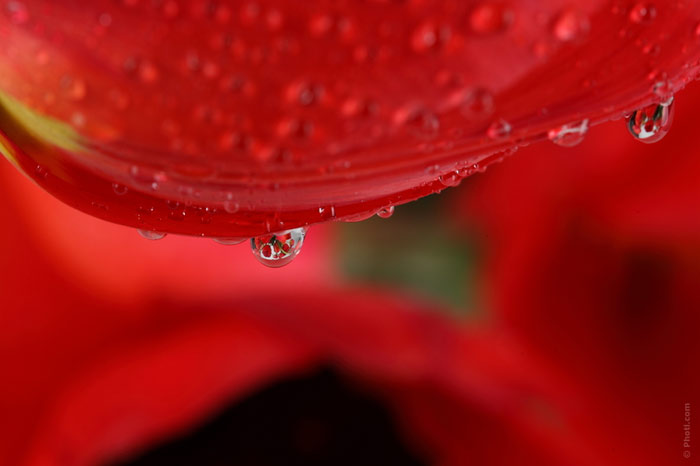For thousands of years, virginity in many different cultures was considered the most important gift that a woman could make her husband on their wedding night. Virginity was a token of purity in many religious traditions. In our review, we have gathered some little-known but interesting facts about the thing, which was so greatly valued in the past, and of which many try to get rid as quickly as possible today.

1. The origin of the word
The term “virgin” descends from the Latin word “virga”, which means “young sprout”. Also, the term comes from the word “virginem”, which means “maiden, unmarried girl or a woman”. The word first appeared in English in the ninth century. It was originally applied only to women.
2. Pearl as a symbol of virginity
For centuries in many cultures, pearl was considered the symbol of women’s virginity and purity. Especially in the context of marriage or religious portraits.
3. Sexiest flower

Flowers have traditionally been associated with female sexuality, as they are symbols of growth and fertility, and also visually resemble female genitalia. To be more specific, virginity is almost exclusively associated with a lily, whose white petals and gold stamens are a visual reminder of the act of penetration.
4. The right of the lord
I’m sure many have heard the phrase “the right of the lord” or “the right of the first wedding night.” Those who have seen the Braveheart movie will be able to recollect it. Those who have not seen the movie or do not know the phrase will be curious to know about the strange medieval law in the UK, which allowed landowners and feudal lords to spend the first night with their peasants’ brides depriving them of virginity.
5. Virginity as a commodity
In some countries, virginity was sold as a valuable commodity. In Japan, for example, a geisha could sell her virginity at the ceremony titled “mizuage”. This ritual became illegal in 1959.
6. “Technical virgin”

“Technical virgin” is a phrase and concept used to describe a woman practicing other types of sex, such as anal and oral, and who has never had a vaginal contact.
7. Forbidden avocado
The Aztecs believed avocado to be a powerful aphrodisiac. Virgins were forbidden to eat it.
8. Hymenoplasty
According to the American Society of Plastic Surgeons, the demand for hymenoplasty, or surgical restoration of virginity, is constantly growing. It’s one of the most increasingly popular surgeries in the recent years.
9. Parthenon is a temple dedicated to virginity
The Greek word for virgin is “parthenos”. One of the most famous monuments in the world, the Parthenon in Athens, was a temple dedicated to Athena’s virginity.
10. Women’s secrets

The 1622 drama, “Changeling” discloses a number of ways for a woman who has lost her virginity before marriage to deceive her future husband. Some of these methods include the use of chicken blood or even scratching women’s genitalia.
11. Desdemona’s mystery
Some critics believe that the red-and-white pattern on Desdemona’s handkerchief in Shakespeare’s Othello play symbolizes her virginity. The fact that she was unable to deliver the handkerchief allegedly led to her death.
12. “The Law of Moses”
According to the “Law of Moses”, the bride’s family must show the bloody sheet after the first wedding night in public places, as a proof of her virginity. If this was not done, the bride was beaten to death with stones.
13. Severe African laws

Until now, in some African countries, an unmarried woman who is not a virgin, may be ostracized, subjected to public shame, or even death. In this case, it does not even matter if her virginity was lost because of the rape.
And all this exists despite the fact many doctors believe a hymen is not a sufficient proof of virginity. Many women have a thin hymen that is stretched or torn easily during cycling or other sports activities.
14. Jewish point of view
Some Orthodox Jews believe that unmarried women with sex experience are “dirty”. The ritual of the wedding cleans them from “carnal misdemeanors.”
15. A step into adulthood
People in the whole world lose their virginity, in average, at the age of 17.3. In Iceland this happens, in average, at 15.6, and in India – at 19.8.
16. “V card collecting”

The phrase “V card collecting” became popular in the mid-2000s among young American men. The purpose of the competition was to sleep with the largest possible number of virgins.
In response to “V card collecting”, the “Born Again Virgins of America!” (BAVAM! ) organization was founded in the USA in 2008. Its purpose was to help women (rarely men) who regret that they lost their virginity because of V-collectors.
17. Virginity in art
“Useless moral lesson” and “Medical examination” are the two paintings by Dutch painter Godfried Schalcken that depict symbols of virginity better than any other art of this period. The first painting depicts an elderly woman who threatens a younger one with her finger, warning her against opening of the box. In the second painting, a girl is crying, while the doctor is examining her urine flask.
18. The water in a sieve
In medieval Europe, vestal virgins were supposedly able to carry water in a sieve. That is why Queen Elizabeth I in the famous portrait of the 1579 is holding the sieve in her left hand to emphasize her virginity.
However, despite her nickname, the Virgin Queen, Elizabeth I was not sinless. It was alleged that she had an intimate relationship with the Earl of Leicester and other men.
19. Roman vestal virgins

Ancient Roman priestesses who tended the cult of Vesta were called vestals. They had to be virgins for 30 years. If this rule was violated, the vestal virgin was buried alive (it was forbidden to shed their blood).
20. Chastity belt
Chastity belts appeared in the 1700s. The last time they were seen was in the 1930s. They were worn by teenage girls to preserve their virginity until marriage. However, many people do not know that these belts were also used to keep the girls from masturbation, which was believed then to be the cause of infertility and obsession.










